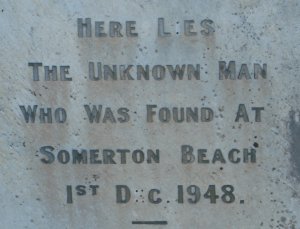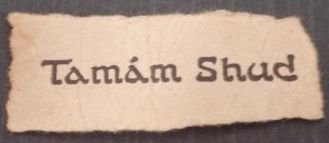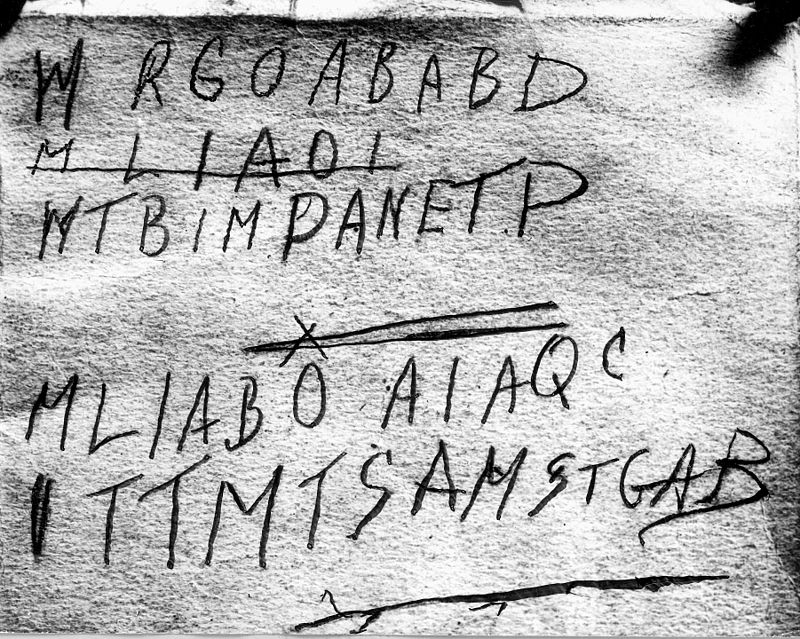Australia's greatest international mystery - The Somerton Man

December 1 1948 – a body is found on a beach in Somerton, South Australia. He was a well-dressed man of fit build with no signs of violent struggle or injury to suggest a cause of death. Police inspecting the case found that there was no identification on the man at all, with even the brand labels of his clothing being removed – and this was only the start of the mystery.
A search through police records for South Australia showed no match for fingerprints or dental records for anybody known, so pictures and the prints of the man were broadcast across Australia and internationally, with a similar lack of results. The man had some odd distinguishing features such as irregular shaping of his ears and teeth, and very well-developed calves which were suggestive of a professional runner or dancer. As this discovery was made in summer, the body was only available for viewing for a few days before it needed to be buried, but a plaster bust was cast of the man’s face for any future investigators.
In mid-January 1949 a suitcase in the lost property section of the Adelaide railway station was identified as having belonged to the mystery man. It contained traces of a thread which had been identified as being used in the clothes the man was wearing on the beach. All identification marks on the clothes had been removed, but police found the name "T. Keane" on a tie, "Keane" on a laundry bag and "Kean" (without the last e) on a singlet. A search concluded that there was no T. Keane missing in any English-speaking country. Police believed that whoever removed the clothing tags purposely left the "Keane" tags on the clothes, knowing Keane was not the dead man's name
By this time the case had garnered international attention, with eight different positive identities being provided by members of the public, all of which were disproven. A further investigation of the man’s clothing found a small piece of paper rolled into the fob pocket of his trousers, containing the words ‘Tamam Shud’ in a distinctive font.
The words seemed meaningless until it was pointed out that these were the closing words in ‘The Rubaiyat of Omar Khayam’, a Persian phrase meaning ‘ended’ or ‘finished’. A picture of this scrap was also released to the public, and a few weeks later it was identified as belonging to a copy of the Rubiayat which had been thrown into the open car window of a doctor who lived near the Somerton area. The inside back over of the book (next to the page where the inscription had been torn out) showed indentations from handwriting. A rubbing of these indentations showed an odd code which is yet to be broken, and a phone number.
The phone number belonged to a nurse living a quarter of a mile from where the Somerton Man’s body was found. Police interviewed the nurse and showed the plaster bust which had been made of the man – she claimed to have no knowledge of him, but the detective at the scene said her reaction was indicative of being "completely taken aback, to the point of giving the appearance that she was about to faint." Neighbours of the lady also confirmed that the day before the discovery of the body that a person matching his description had been seen in the area asking about the nurse.
In the nearly 70 years since the case was opened over 200 positive identifications have been claimed, all of which have been disproven. Stories about the man range from a case of unrequited love to Soviet espionage, but there is still no confirmation of who he really is. The nurse in question had two children, and her daughter sincerely believes her mother had been involved with the KGB, as had the Somerton Man. She also believes that her brother is the child of the nurse and the Somerton Man as he also had the distinctive teeth and ears as mentioned before. Her brother has passed away, but he has also left children who have been DNA tested and this has uncovered solid evidence placing a genetic history within the United States, a possible link to the unknown man.
Two requests to exhume the Somerton Man’s body for DNA testing have been made, but denied so far. The plaster bust which was made contains strands of his hair, but chemical reactions from the formaldehyde used in the interment process has made DNA testing of this hair impossible. This still remains one of Australia’s great mysteries.